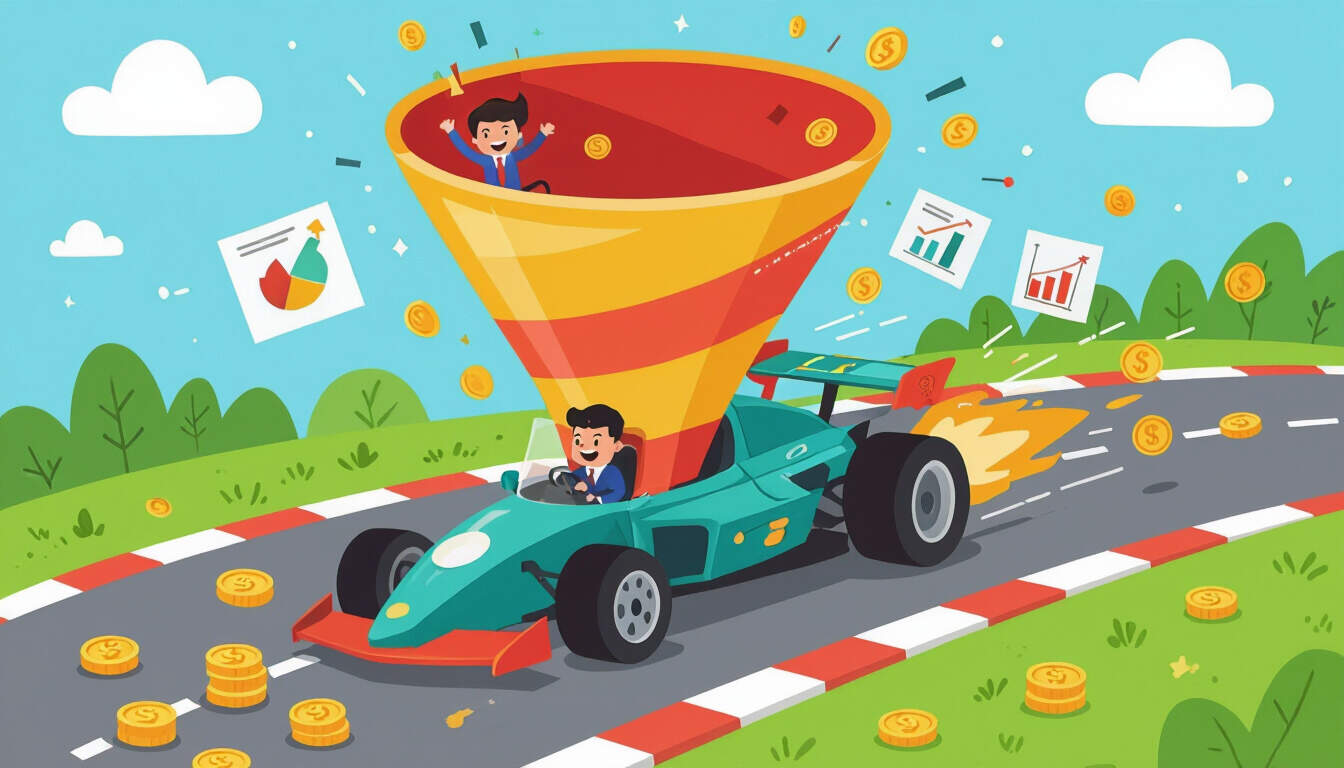Streamlining Sales Funnel Automation
 by Thaddeus Blanda
by Thaddeus Blanda
Sales funnel automation transforms business operations by automating key stages from lead generation to conversion. This approach boosts efficiency, reduces manual errors, and drives revenue growth, making it essential for modern sales teams and executives.

Sales funnel automation stands as a core element in modern business strategies, helping organizations manage their processes with greater precision. By integrating tools that handle routine tasks, companies can focus on building stronger customer relationships. For instance, automation in lead nurturing ensures that potential clients receive timely follow-ups without constant oversight.
In the initial stages, businesses often deal with a high volume of leads. Sales funnel automation steps in here by sorting and prioritizing these leads based on set criteria. This means sales teams can dedicate their efforts to high-potential opportunities rather than spreading resources thin. Tools like email sequences and CRM systems play a vital role, allowing for seamless tracking and engagement.
Benefits for Revenue Operations
One major advantage is the improvement in overall efficiency. Revenue operations benefit from reduced cycle times, as automated workflows handle data entry and reminders. This leads to faster deal closures and better resource allocation. For operations specialists, it means less time on administrative duties and more on strategic planning.
Another key aspect is data analysis. Automated systems collect insights on customer behavior, providing valuable patterns that inform decision-making. Sales teams can use this information to refine their approaches, ensuring that marketing efforts align with actual buyer interests. For example, if data shows certain products appeal to specific demographics, adjustments can be made quickly.
Implementation Strategies
To get started, organizations should first assess their current sales processes. Identifying bottlenecks is crucial, as it highlights areas where automation can make the most impact. Common steps include setting up software that integrates with existing platforms, such as CRMs or marketing tools.
A structured plan might involve several phases. Begin with mapping out the sales funnel, from awareness to purchase. Then, introduce automated responses for inquiries and follow-ups. Training staff on these systems ensures smooth adoption, turning potential resistance into enthusiasm.
Lists can simplify this process:
- Evaluate current tools and identify gaps.
- Select reliable automation software based on business needs.
- Test the system with a small group before full rollout.
- Monitor performance metrics regularly for adjustments.
Challenges and Solutions
While the advantages are clear, challenges may arise. Integration issues can occur when combining new automation with legacy systems. Addressing this requires careful selection of compatible tools and possibly consulting experts.
Data security is another concern, especially with sensitive customer information involved. Businesses must implement strong protocols to protect this data, ensuring compliance with regulations. By doing so, they maintain trust while leveraging revenue operations enhancements.
Over time, as teams adapt, these hurdles diminish. The result is a more agile operation that responds effectively to market changes.
Real-World Applications
Consider how a mid-sized company might apply this. They could use sales funnel automation to send personalized content to leads, based on interaction history. This targeted approach increases conversion rates and builds loyalty.
In larger enterprises, the scale amplifies benefits. Automated reporting provides executives with real-time dashboards, aiding in forecasting and budgeting. Such insights help in allocating resources where they yield the highest returns.
Future Trends
Looking ahead, advancements in technology will further enhance automation capabilities. Integration with AI is expected to offer predictive analytics, allowing businesses to anticipate customer needs before they arise. This proactive stance can significantly boost revenue streams.
As more companies adopt these practices, the competitive landscape will shift. Those who prioritize sales funnel automation will likely see sustained growth, outpacing peers who rely on manual methods.
In summary, embracing revenue operations through sales funnel automation offers a pathway to improved efficiency and profitability. By focusing on strategic implementation, businesses can achieve long-term success in their sales endeavors.
